Supercritical Redshift 6 – V1.1 Firmware Update
New features, presets and bug fixes

The Supercritical Redshift 6 receives its first firmware update, adding sought after features and a handful of bugfixes.
[Update: February 27th, 2025] The highly acclaimed Redshift 6 just got its first firmware update. Added functionality includes the addition of USB MIDI plus additional modulation destinations which include Character, Detune, Envelope Attack, Decay, Sustain and Release.
There’s also a bunch of new presets created by Fibbish keyboard legend Kebu! Improvements include the renaming of the LFO Trigger to ‘Sync’ and there’s a decent handful of bug fixes that either improve or enhance functionality.
Supercritical also say that the next firmware update is already in beta testing and should be available in March 2025!

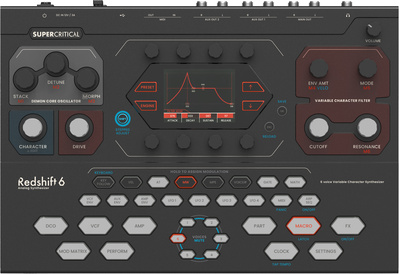
[December 16th, 2024] It’s been almost a year since we first reported on the Supercritical Redshift 6, the innovative desktop synth that wowed audiences at Superbooth 2024. Now our patience is being rewarded with the synth now available to order and shipping imminently.
The Redshift 6 sounded incredible when I checked out their stand at Superbooth this year, and I couldn’t even get close to it, such was the crowd assembled around it. Suffice it to say, what I heard was incredibly good, and now we can all indulge ourselves in this mighty powerful synth in a box.
I was beginning to get a little worried that it may never appear as Supercritical were hoping to start shipping in the summer, but we can all breathe a sigh of relief and rejoice in this most excellent of Xmas gifts!
[January 24th, 2024] In a time when manufacturers are looking to innovate under the restrictions of high costs and fewer components, it makes sense to ‘recycle’ what you already have. This may or may not be the case with Supercritical, but with the Redshift 6, they have utilised their existing technology and fashioned something new. Is this something for those of us not tumbling down the rabbit hole of Eurorack?
The Redshift 6 is a six-voice, polyphonic analog synth with digital control and packaged in a smart desktop case. Upcycling or something new and exciting? Let’s take a look…
The Power of 6
To keyboard or not to keyboard, that is the question that desktop synth designers must often ask themselves. There are a raft of these synths available with a miniature keyboard built-in, not always to the benefit of the user experience. Looking at the Supercritical Redshift 6, there is a heavy emphasis on the hexagonal.
This almost disguises the included, single-octave keyboard, but there it is, doubling up as a modulation destination selector! Buttons are one thing and knobs are another. The Redshift 6 does have a healthy amount of each.
A 2.7″ TFT IPS colour screen delivers all the information and features eight endless and clickable potentiometers to aid quick navigation of the system.
Under The Redshift 6 Hood
Using their Demon Core Oscillator and Neutron Flux filter designs, Supercritical has crammed some decent sonic capability into the Redshift 6. Those six voices each feature a DCO with analog waveforms and the filter is an analog 4-pole state variable affair, also under digital control. The signal chain is fully analog, right up to the stereo DSP effects processor, which can be disabled, should you wish.
Each of those oscillators features different engines ranging from twin-oscillator to supersaws, flanging phase sync engines to transistor organs. Supercritical inform us that new engines can be added via software updates. Now that’s a pretty attractive proposition. The Supercritical Redshift 6 also features flexible gain staging as well as optional voice chaining and each voice can be routed to an individual output on the rear.
Supercritical claim a “modern MIDI implementation” and it also supports MPE.
The Supercritical Redshift 6 From Behind
Talking of the rear, Redshift 6 sports three pairs of audio outs, set up as a main pair and two aux pairs. The built-in DSP FX system will only output to the main outs, however. There are USB and MIDI connections but, surprisingly for a company founded in modular, no CV/Gate options.
More Information
The Supercritical Redshift 6 is available to buy right now!


9 responses to “Supercritical Redshift 6 – V1.1 Firmware Update”

 4,1 / 5,0 |
4,1 / 5,0 | 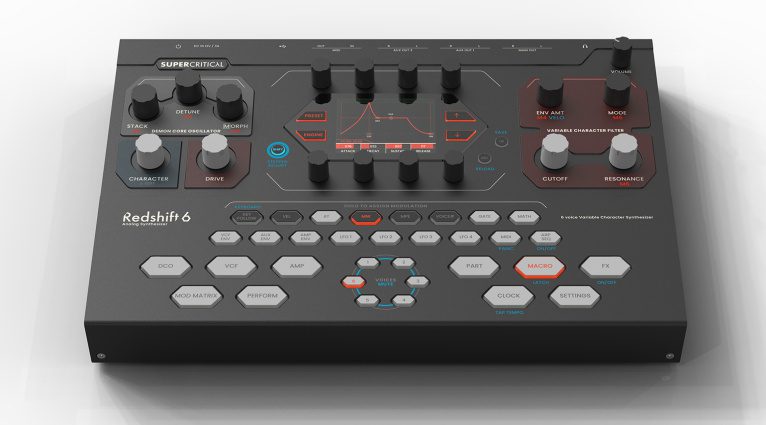
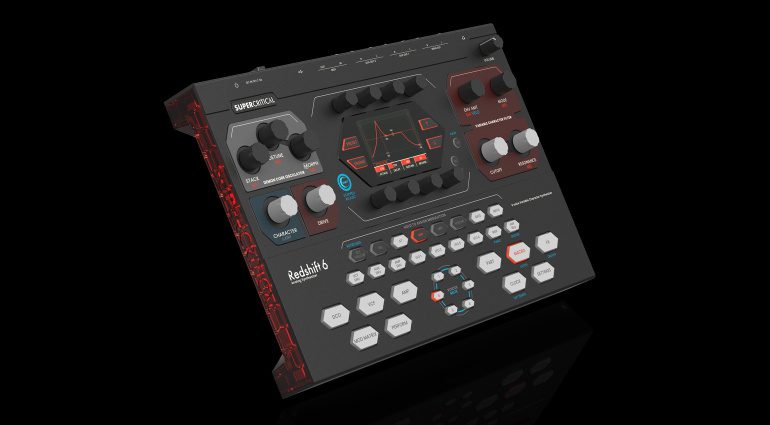
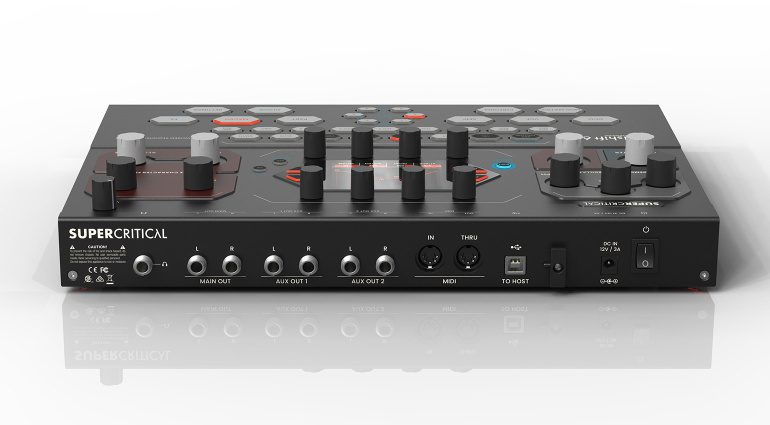
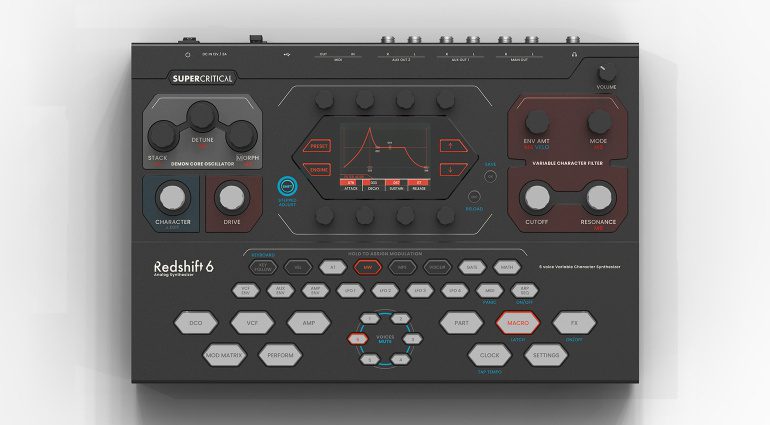
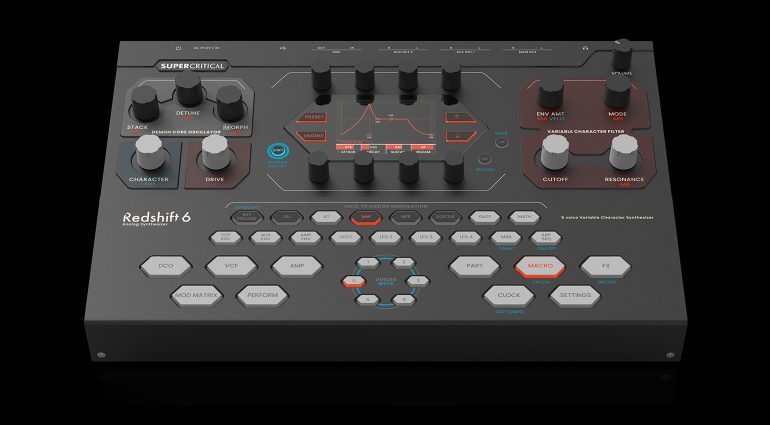






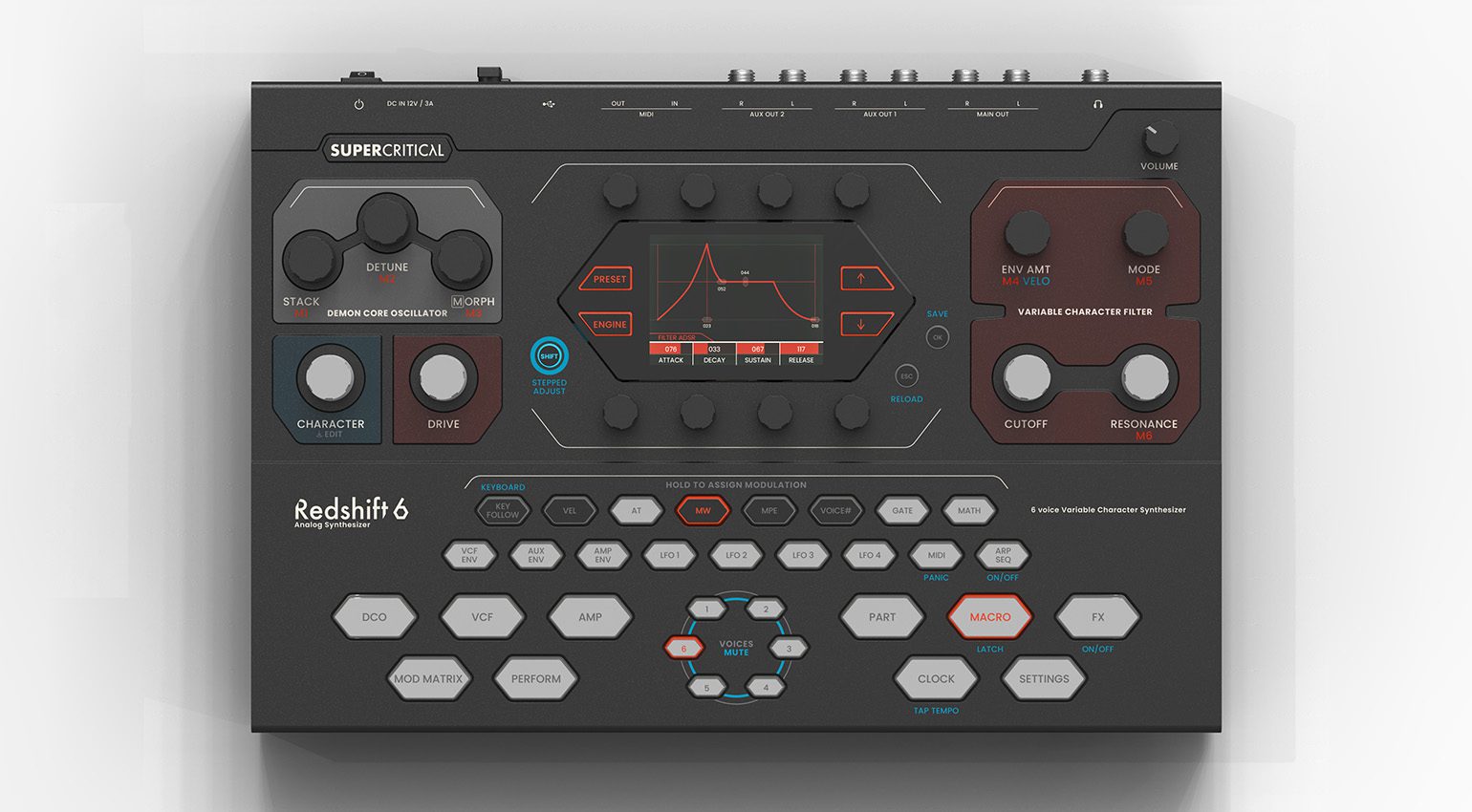
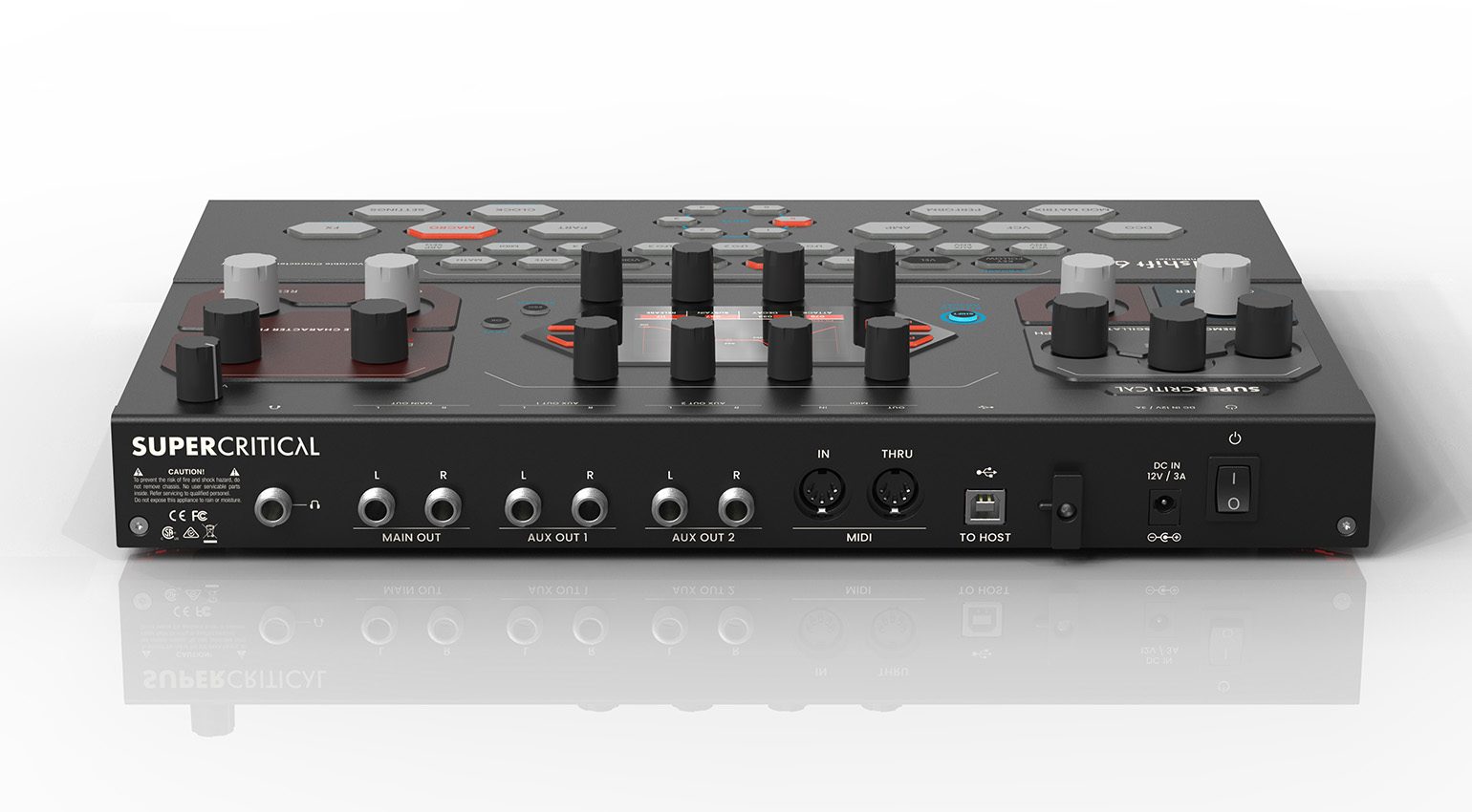
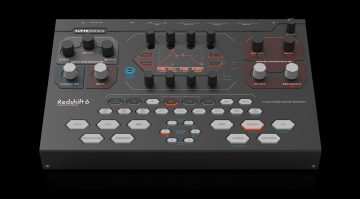

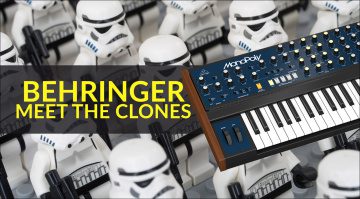
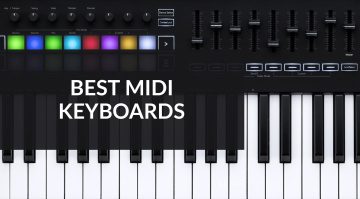
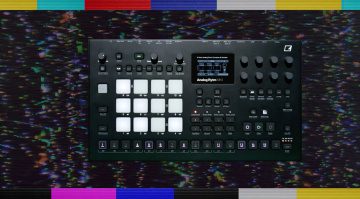
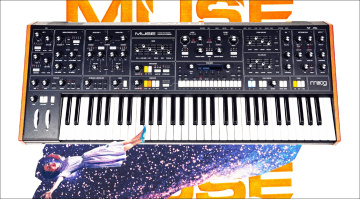
if this synth uses DCOs, i think “polyphonic analog synth” would be incorrect. you may want to change that to “hybrid synth” or something that acknowledges the digital elements within the architecture.
Junos have DCO as well and are considered fine vintage analog synths.
Besides you would you enable to have a synth with presets without anything digital included?
Roland Juno-6, Juno-60, Juno-106, JX-3P, JX-8P, and JX-10, Elka Synthex, Korg Poly-61, Oberheim Matrix-6, Sequential Prophet 08, to name but a few. All analog synths with DCO’s. A digitally controlled oscillator is still an analog oscillator but it uses a digital counter IC to maintain tuning accuracy.
A digital synth is defined by its use of pure digital oscillators, such FM, wavetables, samples, etc.
DCOs outputs an analog signal the same way VCOs outputs an analog signal. The difference is how the pitch is controlled. There isn’t much “digital” about DCOs, the “digital” part is/was mostly marketing in the 80s when digital technology was all the buzz. A better name would be “crystal quartz clock controlled” rather than “digitally controlled”.
It already sound pretty good on video, curious to test it live. Also like it’s compact size and nice centered screen, I mean it’s bigger than what the screen on an ob-x8. Front looks very user friendly.
Unfortunately, Supercritical still advertises features that the synth doesn’t even have yet, such as an effects processor, arpeggiator and various phaser and organ engines. The 1.1 update is more than a joke, especially 3 months after the release of Redshift 6. The synth is also almost impossible to use, as there are no fine-tuning parameters and the graphic display only allows very rough settings. The synth has at most 30 mediocre presets, and with the 1.1 update only about 10 more presets were added. It’s very surprising that someone like Kebu would lend his name to this. Furthermore, you need 3 steps to switch to a preset, which is incredibly annoying. I think it’s a shame that the manufacturer is simply passing on information without really testing the device.
I’ve owned the synth since its release in December 2024 and have been waiting for a proper firmware update and no empty promises ever since.
Purchased the Redshift after watching reviews, hearing demos, and reading plenty notes about the pace of firmware updates. The Supercritical team is very clear about what you are buying, it is all over their site. At this price point, even firmware 1.0 was good enough, everything subsequently released is a bonus. Just a gorgeous sounding machine, with swappable filters, and amazing even as mono synth.
Can’t wait for multi-timbrality to be released 🙂
When I look at the Thomann product page of this synthesizer, it states that the device has an effects section, a sequencer and arpeggiator. Are these functions available and do you really have to press 3 buttons to change a preset?
I don’t buy products on the basis of what salespeople say.
I bought a Redshift, what it does overcomes current firmware limitations. That is my personal opinion, and not everyone’s like 🙂
You are currently viewing a placeholder content from Facebook. To access the actual content, click the button below. Please note that doing so will share data with third-party providers.
More InformationYou are currently viewing a placeholder content from Instagram. To access the actual content, click the button below. Please note that doing so will share data with third-party providers.
More InformationYou are currently viewing a placeholder content from X. To access the actual content, click the button below. Please note that doing so will share data with third-party providers.
More Information